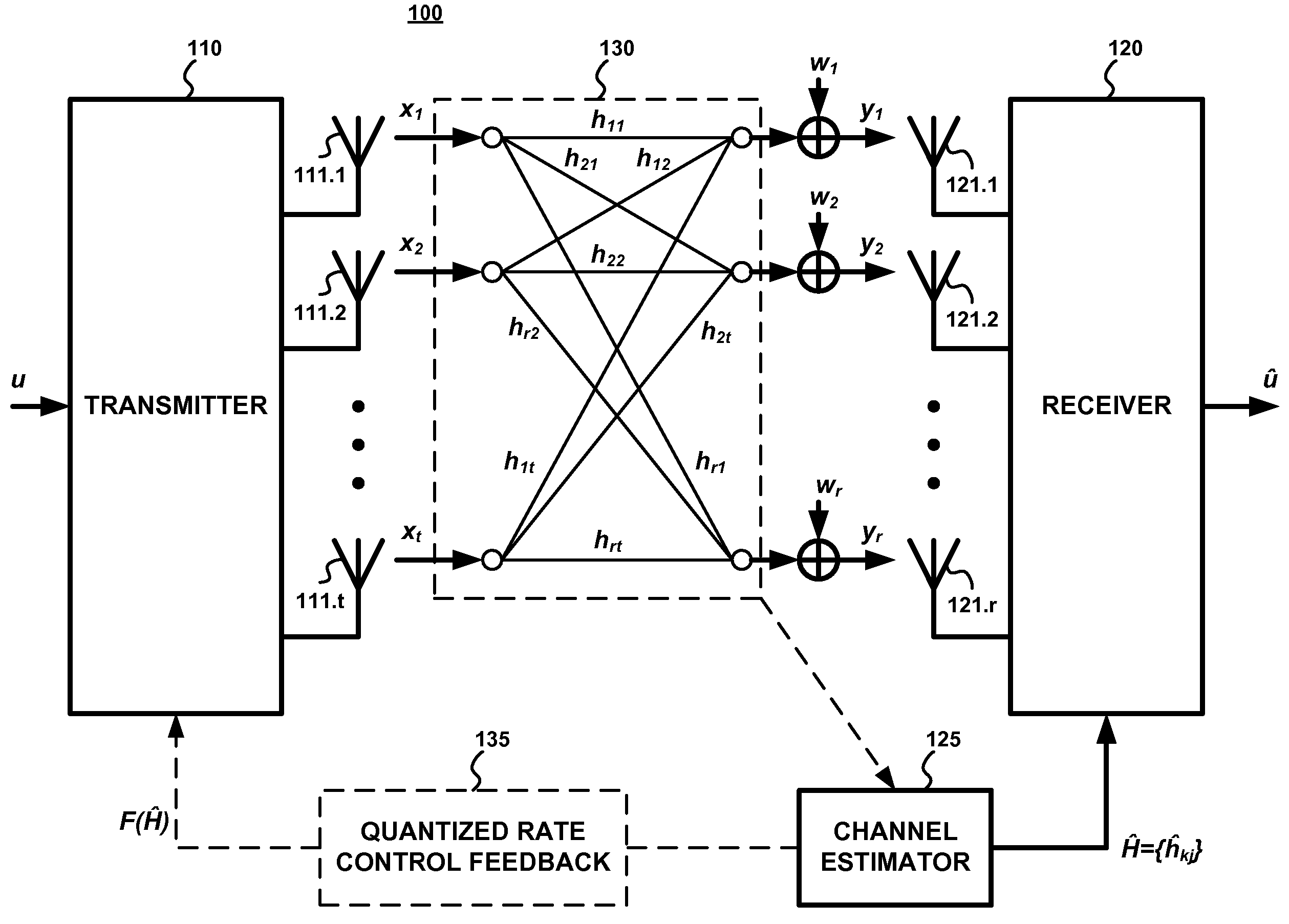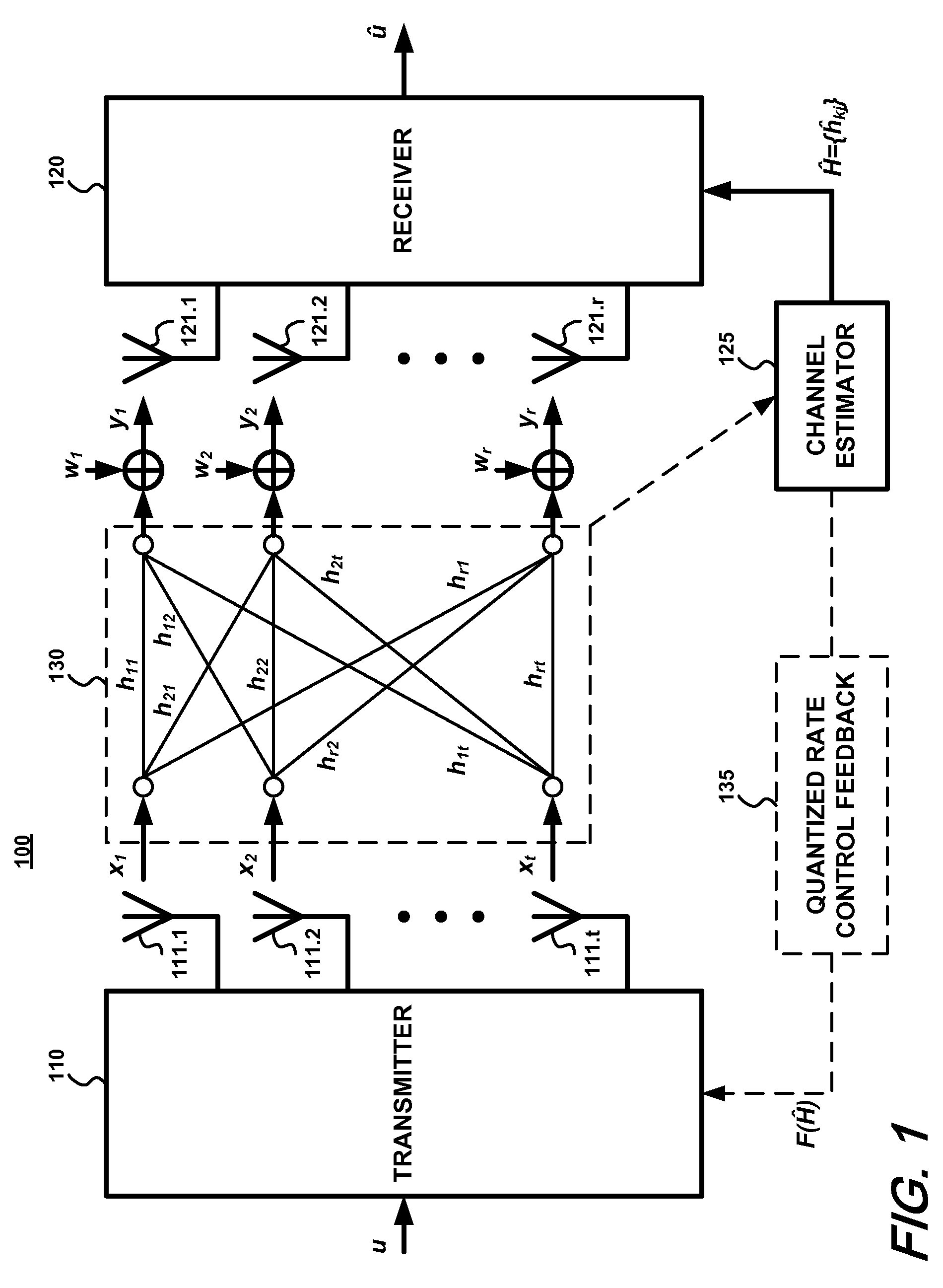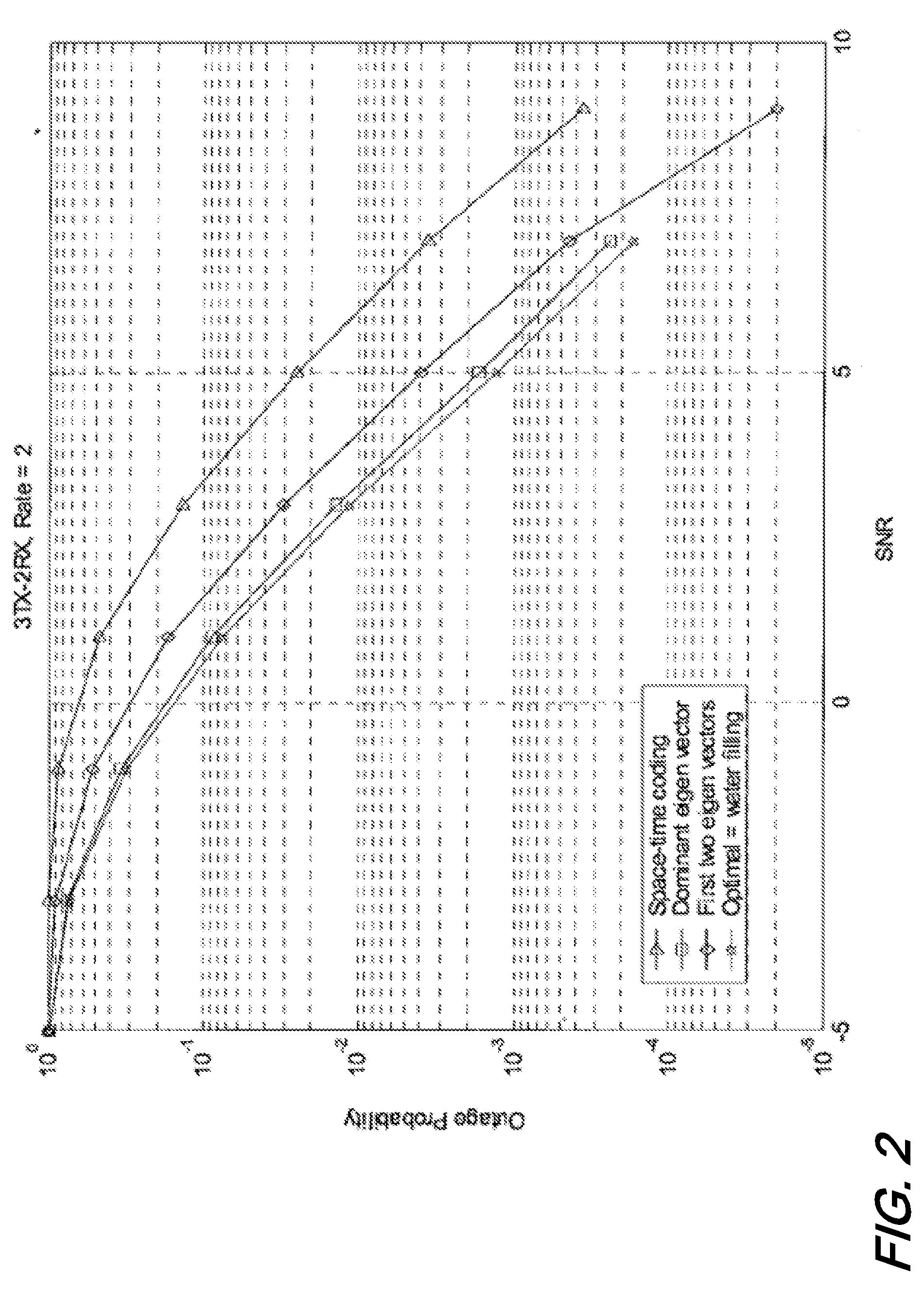Quantized multi-rank beamforming with structured codebook for multiple-antenna systems
a multi-rank beamforming and codebook technology, applied in the field of wireless communications, can solve the problems of user equipment (ue) complexity and difficult design of high-rate communication systems, and achieve the effects of low feedback rate, improved coverage and reliability, and low impact on base station and user equipment complexity
- Summary
- Abstract
- Description
- Claims
- Application Information
AI Technical Summary
Benefits of technology
Problems solved by technology
Method used
Image
Examples
Embodiment Construction
[0029] An exemplary multiple-antenna communication system 100 with quantized feedback is schematically shown in FIG. 1. A transmitter 110 transmits from t transmitting antennas 111.1-111.t over a fading channel 130 to r receiving antennas 121.1-121.r coupled to a receiver 120. A channel estimator 125 provides an estimate of the channel 130 to the receiver 120. The channel estimate is also quantized and provided to the transmitter 110 via a quantized rate control feedback channel 135.
[0030] For a multiple-antenna system with r receive and t transmit antennas the baseband channel model can be expressed as follows:
Y=HX+W, (1)
where Y is the r×1 received column vector, H is the r×t channel matrix, X is the t×1 transmit column vector, and W is the r×1 noise column vector. The input is subject to an average power constraint P, i.e, tr(Q)≦P, where Q=E[XXH], E[.] denotes the expected value and tr(.) represents the trace of a matrix. A goal of an exemplary space adaptation scheme is to m...
PUM
 Login to View More
Login to View More Abstract
Description
Claims
Application Information
 Login to View More
Login to View More - Generate Ideas
- Intellectual Property
- Life Sciences
- Materials
- Tech Scout
- Unparalleled Data Quality
- Higher Quality Content
- 60% Fewer Hallucinations
Browse by: Latest US Patents, China's latest patents, Technical Efficacy Thesaurus, Application Domain, Technology Topic, Popular Technical Reports.
© 2025 PatSnap. All rights reserved.Legal|Privacy policy|Modern Slavery Act Transparency Statement|Sitemap|About US| Contact US: help@patsnap.com



